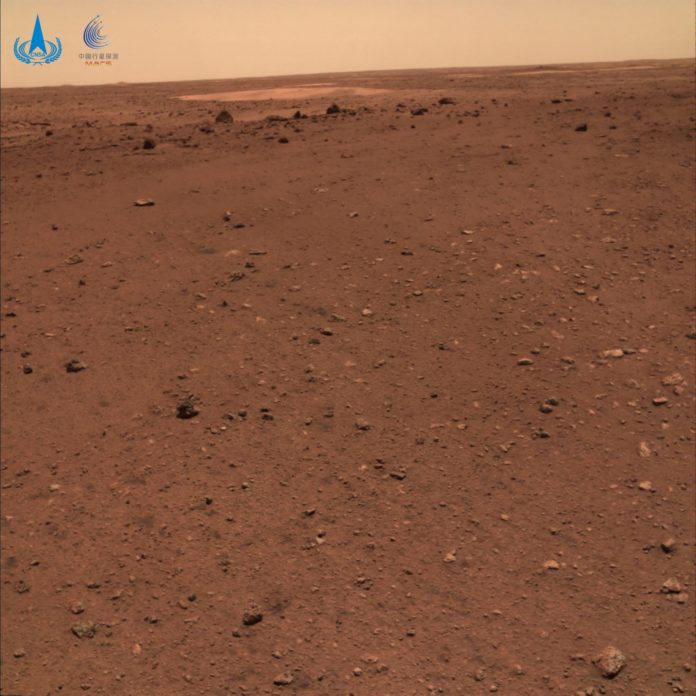NEW DELHI: China today released the pictures of Mars, captured and sent by its Zhurong rover and showing the Red planet’s terrain, rocks and dunes.
The pictures unveiled by the China National Space Administration (CNSA) show the landing site panorama, Martian topography and landforms, the landing platform, and a selfie of the rover itself with the landing platform.
Zhurong has been on Red planet for 28 Martian days.
The release of the first scientific images marks a complete success of China’s first Mars exploration mission, the space agency was quoted as saying by the Chinese official media.
This panchromatic image, taken by the navigation terrain camera on the rover before leaving the landing platform, shows a flat area near the landing site, while the horizon of Mars can be seen in the distance.
The abundance and size of rocks in the landing site indicate good autonomous site selection and effective hovering and obstacle avoidance, the Chinese media said.
The Martian landscape image was the first landform image taken by the navigational terrain camera after the rover reached the surface of Mars. It shows a relatively flat terrain nearby.
Rocks of different sizes, with smooth edges and light colors, are seen scattered and semi-buried. A circular pit can be seen with sharp-edge stones of darker colors. Further away are some sand dunes.
The image showing the landing platform was taken by the rover at a distance of roughly 6 meters away from the platform, the space agency said, pointing out that China’s national flag can be seen unfurled with brightness.
“Zhurong is very healthy and steadily making way to its designated targets every day. Since the touchdown on May 15, the rover has been checking out its own conditions as well as its surroundings; it has moved some 80 meters by now,” China’s government-run CGTN quoted Zhang Rongqiao, Chief Designer of China’s first Mars exploration mission, as saying.
China will release scientific data in a timely manner so that everyone can share the fruits of China’s space development, said CNSA’s Director Zhang Kejian.








